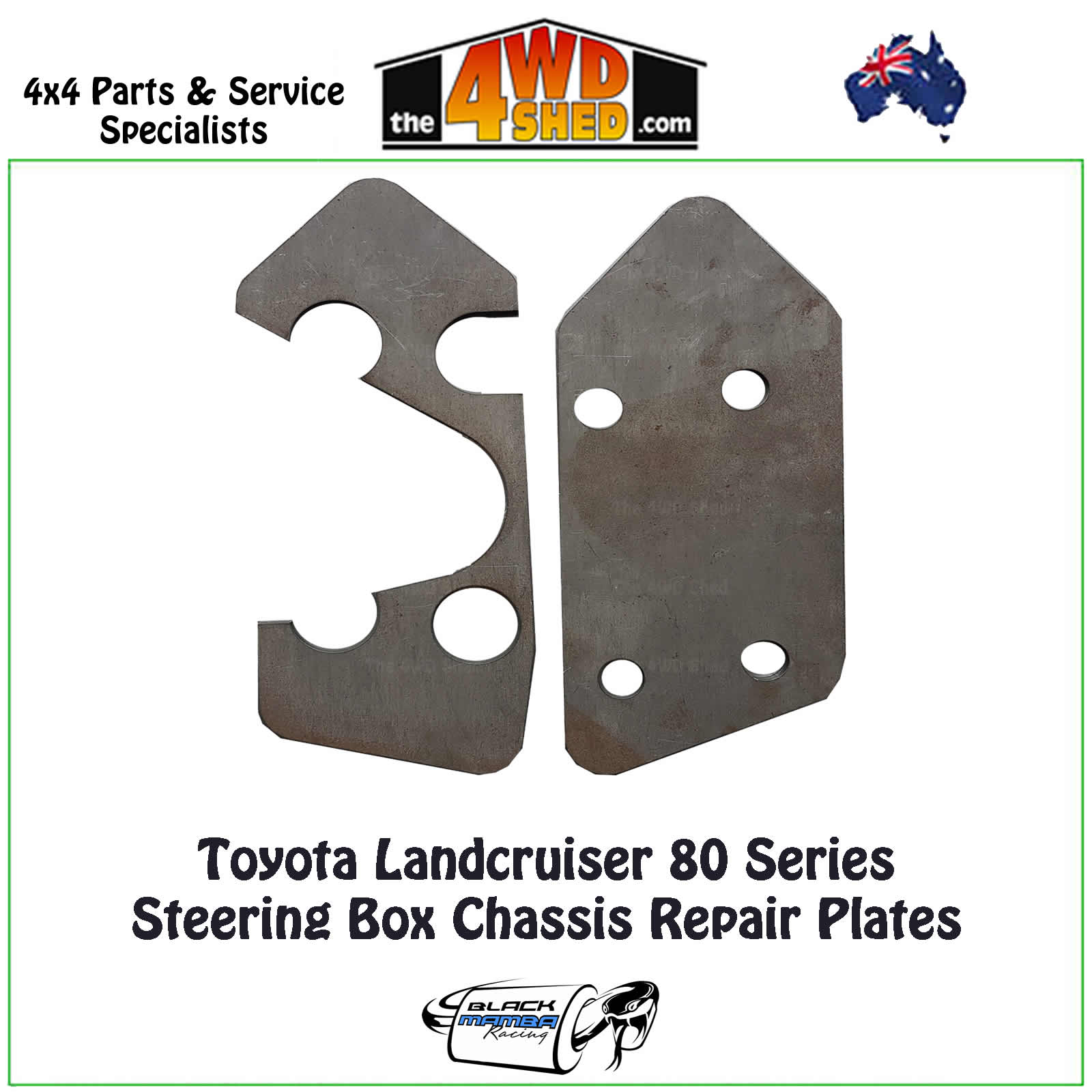After repairing and reinforcing frame cracks around the steering box on my 80 I have a theory on a relatively easy change that could possibly prevent this cracking from getting started, at least in more moderate use-case scenarios. The photos below illustrate the change that I think could be helpful, possibly as a prevention on non-cracked 80s. To cut to the chase though, I think that welding the engine side of the panhard bracked to the frame at the lower edge of the frame would stiffen and strengthen it's connection to the frame and possibly prevent the cracking that seems to start on the other side of the frame (tire side) below the steering box. I'm sharing this in case it's helpful to folks that are concerned about the cracking issue and as a way to possibly protect against cracks without adding plates/etc. which some folks may wish to avoid. The good thing is that with a flux core wire welder that doesn't have a gas nozzle you can get into the weld points below pretty easily with no disassembly/etc. making this a very quick/easy way to add some stiffening.
Here's a photo of where my 80's frame cracked and where I think this cracking typically starts even though it often migrates to the frame sides as things loosen and flex more under the steering box. The red lines trace the two cracks my frame had (the lower crack was partially repaired before). The green line shows where I've seen these crack on other 80s (via mud photos):

Here are photos that show the factory welds on the engine side of the frame where the panhard bracket mounts. The green dots represent the lowest weld point. The red dots show where I think adding welds would strengthen the connection and lower the stress on the other side where cracking typically starts. Note that the green dots are around the middle of the frame side which is the most flexible point of the frame and in my understanding explains why the stress if focused on the joint that typically cracks (shown above). I'm not sure why Toyota didn't weld below this mid-point but I assume that it was because of difficult access due to the crush tubes, though there may be other reasons? I don't think welds at the red dots would be enough for heavy wheeling with large tires but for stock tire size and mostly road use it may?


To my discredit I'll show the finished product of my repairs. The first repair (in picture 1 above) was hired out but I wasn't happy with it so decided to make the next repair attempt my first welding project. I bought a cheap flux core welder and added reinforcement plates inside and out, repaired the cracks on my panhard mount, welded the sections near the red dots and added a small corner brace to the panhard bar, etc. I didn't like putting so much heat into the frame with the plates but decided to weld it all since I had the steering box off already. The welds below are ugly and it's mostly because I'm not a good, or very patient, welder (or painter) at this point. Accessing the inner plate is also really difficult and it was spatter city in many areas


After years of working on the front-end of my 80 it's finally feeling stiff and tracking well as a result. I plan to add a bit more caster and then I think I'll be done in this area until the engine is out one day and I can grind/clean up the welds/etc.
For reference I used the plates below. They were delivered to my location in TN 10 days from purchase. The plates were $75 and shipping was $45.

 www.the4wdshed.com
www.the4wdshed.com
Here's a photo of where my 80's frame cracked and where I think this cracking typically starts even though it often migrates to the frame sides as things loosen and flex more under the steering box. The red lines trace the two cracks my frame had (the lower crack was partially repaired before). The green line shows where I've seen these crack on other 80s (via mud photos):
Here are photos that show the factory welds on the engine side of the frame where the panhard bracket mounts. The green dots represent the lowest weld point. The red dots show where I think adding welds would strengthen the connection and lower the stress on the other side where cracking typically starts. Note that the green dots are around the middle of the frame side which is the most flexible point of the frame and in my understanding explains why the stress if focused on the joint that typically cracks (shown above). I'm not sure why Toyota didn't weld below this mid-point but I assume that it was because of difficult access due to the crush tubes, though there may be other reasons? I don't think welds at the red dots would be enough for heavy wheeling with large tires but for stock tire size and mostly road use it may?
To my discredit I'll show the finished product of my repairs. The first repair (in picture 1 above) was hired out but I wasn't happy with it so decided to make the next repair attempt my first welding project. I bought a cheap flux core welder and added reinforcement plates inside and out, repaired the cracks on my panhard mount, welded the sections near the red dots and added a small corner brace to the panhard bar, etc. I didn't like putting so much heat into the frame with the plates but decided to weld it all since I had the steering box off already. The welds below are ugly and it's mostly because I'm not a good, or very patient, welder (or painter) at this point. Accessing the inner plate is also really difficult and it was spatter city in many areas
After years of working on the front-end of my 80 it's finally feeling stiff and tracking well as a result. I plan to add a bit more caster and then I think I'll be done in this area until the engine is out one day and I can grind/clean up the welds/etc.
For reference I used the plates below. They were delivered to my location in TN 10 days from purchase. The plates were $75 and shipping was $45.

80 & 105 Series Steering Box Chassis Repair Plates - Black Mamba Racing
Toyota Landcruiser 80 Series Steering Box Chassis Repair Plates




